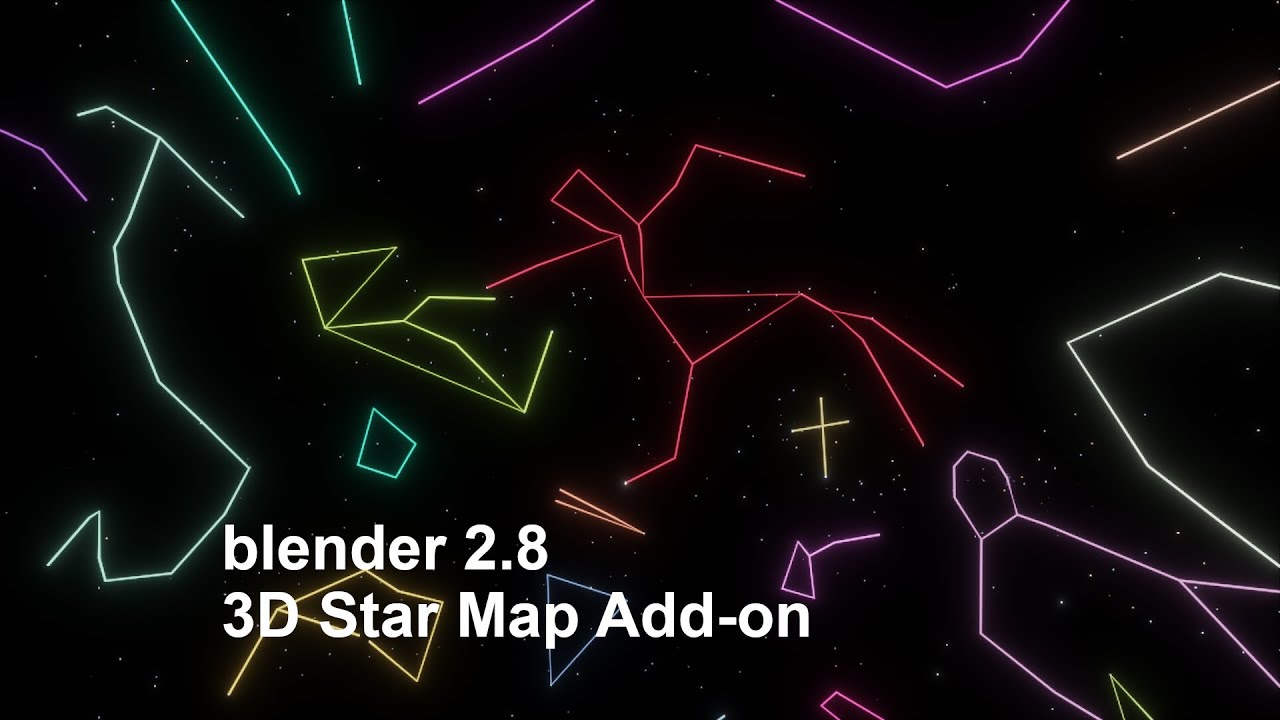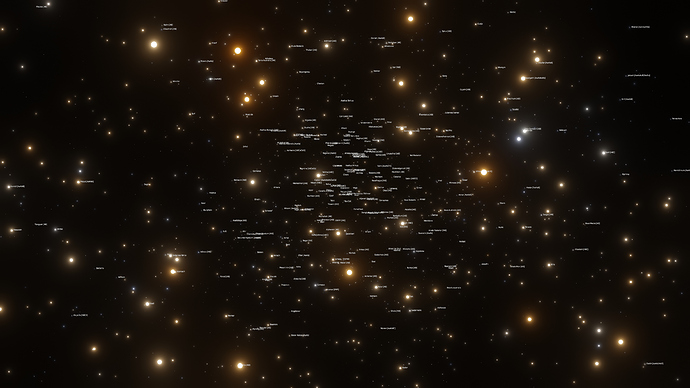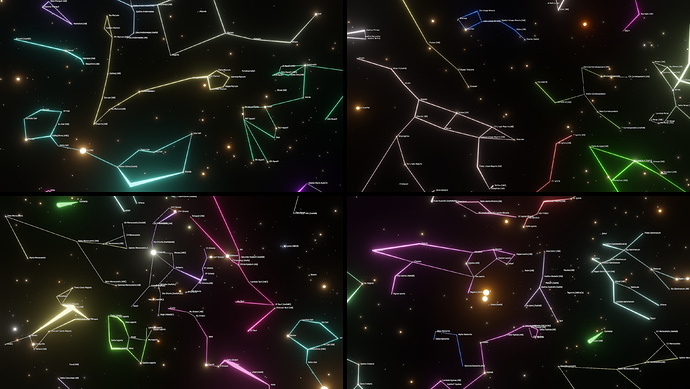Hi everyone!
I made an add-on that lets you import up to more than 3,750 stars into your blender viewport based on scientific data. You can then explore their positions, features and movement in the blender viewport or use the imported stars to render beautiful star maps, scientific images and more.
The add-on menu is accessible through a sidebar panel. This add-on works for blender 2.8+.
Here is a short trailer that shows some of its features:
Main features:
- Limit the amount of imported stars based on distance from Earth, spectral classes, apparent magnitude and more
- Display the stars’ names in the viewport
- Place the stars in galactic or celestial coordinates
- Watch how the stars move over time based on their proper motion and radial velocity
- Simulate the night sky: All stars are projected onto a sphere and their apparent magnitude is used for emission
- Automatically connect the stars to show star constellations
Version history:
- v1.0.1: The stars’ emission strength in night sky mode now properly scales with the Luminosity setting.
Download:
- The add-on is available on Gumroad
- I also made a free demo version, a documentation PDF and a tutorial video
Now that I finally figured out how to upgrade from new user status (sorry), here are a few example images:
Viewport render in Eevee:
Viewport renders of star constellations in Eevee. With the settings used here, the stars are placed in 3D space, have relative radii and are connected through star constellation lines. A more realtistic representation of the night sky is possible with the night sky mode option.
Map of all the stars within 10 light-years of Earth. The stars’ positions and colors were automatically generated with this add-on.




 It works very well.
It works very well.